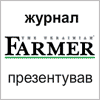Muddy prophecy: a market for Ukraine’s farm land

It’s not a stretch to say that Ukraine’s 40 million hectares of farmland is one of the world’s biggest opportunities in agriculture. Spreading from the grassy steppe of the nation’s east to the Carpathian forests in the west, Europe’s ancient breadbasket could feed one billion people—if used well.
Ukraine now sends wheat to Egypt, corn to China, snails to France and ice cream to Israel. But there’s a complication standing between the country and the investments it needs to become a world food power. That is, the moratorium on the sale of private land. For 16 years, this law has meant that no one could buy or sell 96 percent of Ukraine’s farmland. Now, attitudes are changing and talk of lifting the ban stirs in Kyiv. Many bet that it will happen after the 2019 elections. It’s a scenario with almost no global precedent. As politicians lay plans, corporations and farmers try to figure out exactly what a market will mean—and how to make it serve their own ends. Protecting Ukrainians. The law was designed, in part, to avoid a repeat of post-USSR privatization property grabs. It was passed in 2001 as a temporary measure. Since, it has been extended five times, surviving three presidential administrations and two revolutions. Fears of catastrophe haven’t diminished. Farmers in rural areas, already struggling to make a living, are buffeted by propaganda whipping up fears. Oligarchs and foreigners will buy Ukraine’s fabled black earth. They will go hungry after losing their ancestral fields.
These fears aren’t unfounded, says Leonid Kozachenko, former vice minister of Agriculture and now a member of Ukraine’s parliament. He’s worried about rich foreigners. “Agriculture today, at the global level, is a very serious issue,” he says. “With global warming, every year, we’re losing about 1.5 million hectares of land. Population is growing. The deficit of foodstuffs becomes very serious.”
This deficit, says Kozachenko, makes Ukraine’s earth a hot commodity. “That’s why some countries—China, the Middle East—countries where there’s money, but no way to increase production—of course they’d come to Ukraine if they could,” he says. “They know that Ukraine can feed no less than 800 million people.” Kozachenko says discussion of this issue is heated in Parliament. While it’s likely the moratorium will be lifted in the near future (there was talk of it being lifted this year), he says most agricultural associations agree that land ownership should still be restricted to Ukrainians for at least 10 years after. “The question is the period of time,” he says. “Some of the associations are proposing more than 10 years.” Who can buy? The question for many is: which Ukrainians will be able to buy? “Most associations and specialists say priority should be given to the local farmer,” says Kozachenko. “Second priority should be given to a farm that’s already using the land on a leasing basis. Number three: any entity or person in Ukraine, no matter where they’re located.” Finding out who really is local isn’t straightforward, however. Kozachenko says about 35 percent of Ukraine’s farmland remains untitled. That’s something that has to be sorted before a market can proceed. Kozachenko isn’t the only one to raise transparency concerns.
Kozachenko’s vision of lifting the moratorium does provide for Ukrainian corporations to purchase farmland. But his priority is for Ukraine’s small farmers to make their own investments. Supporting this— allowing farmers to take out loans to purchase land—will require cash, and a lot of it. “We need to set up a financial institution in Ukraine able to provide mid and long-term financing,” says Kozachenko. “I am talking about a mortgage bank, as a second-level financial institution, that could move financing through local banks.”
Kozachenko imagines an initial price per hectare at around $800 per hectare, with the market driving it up to $2000 to $3000 over the first few years. He says: “The maximum would be the same as Europe’s average, in 10 years.” It could be a valuable investment. He says: “If the legislation allows foreign buyers, then the price would be flying up very fast: more than $10,000 per hectare.”
IC UAC accrording to Ukrainian Business Journal
- 3317 reads








